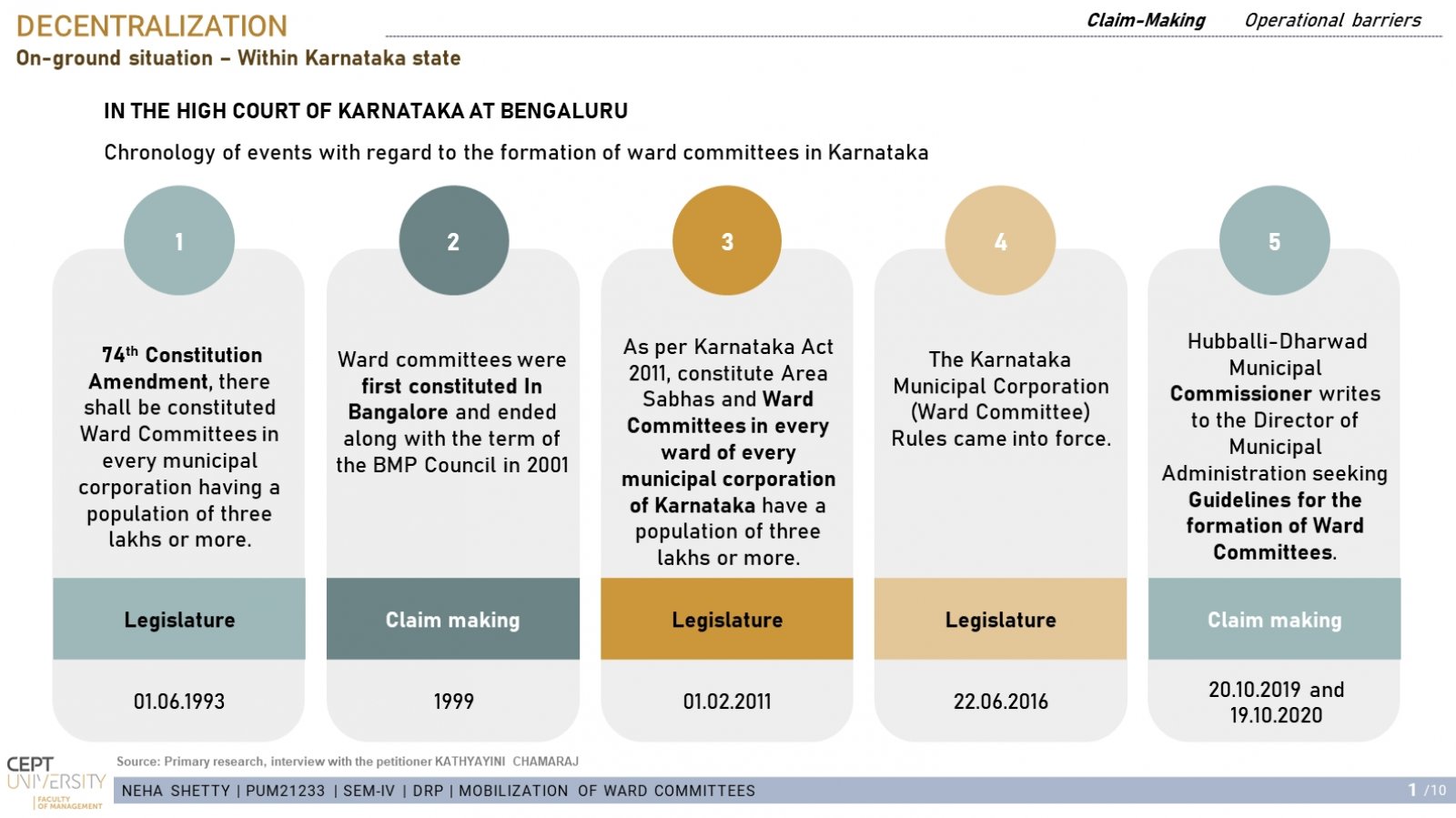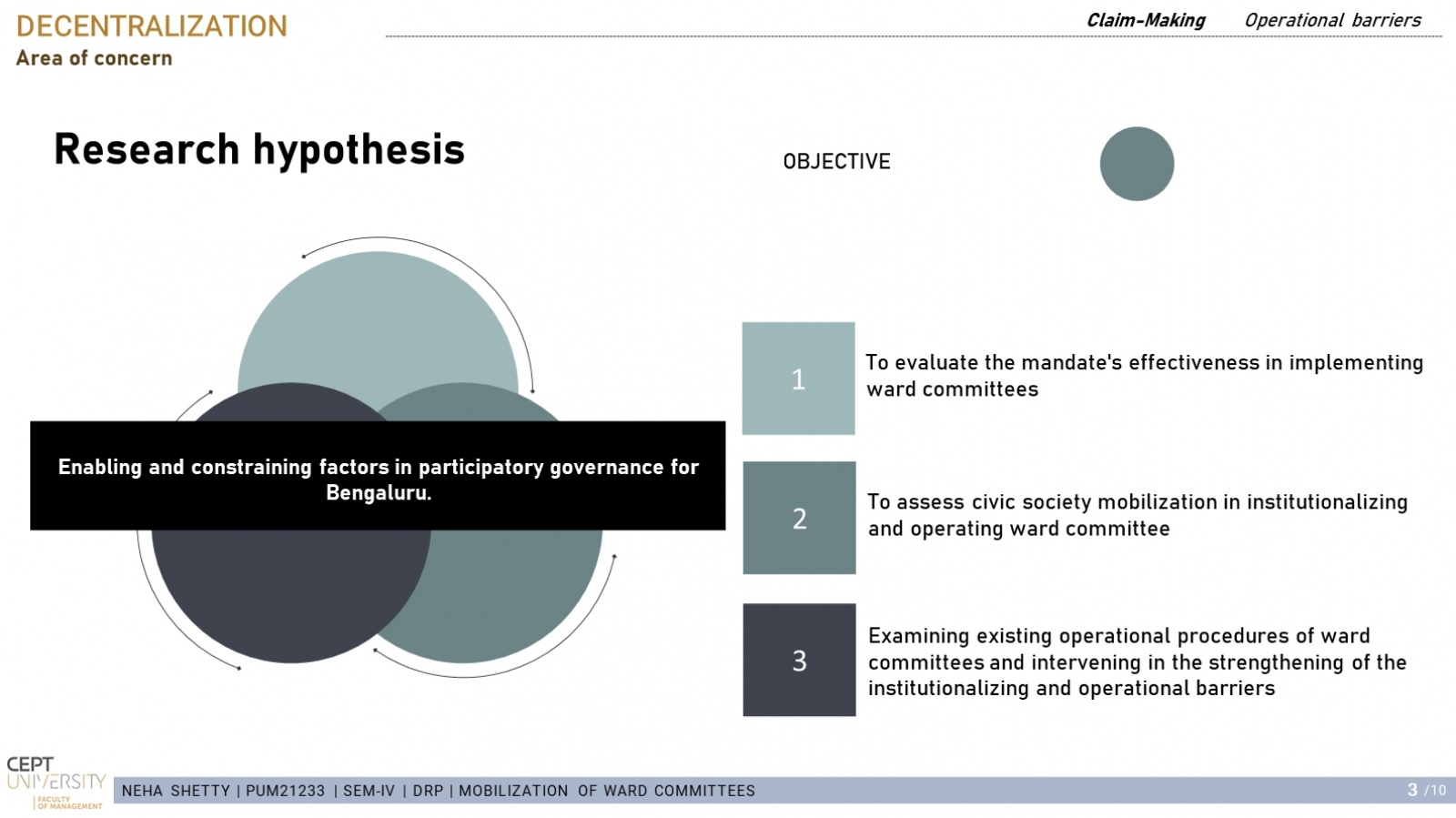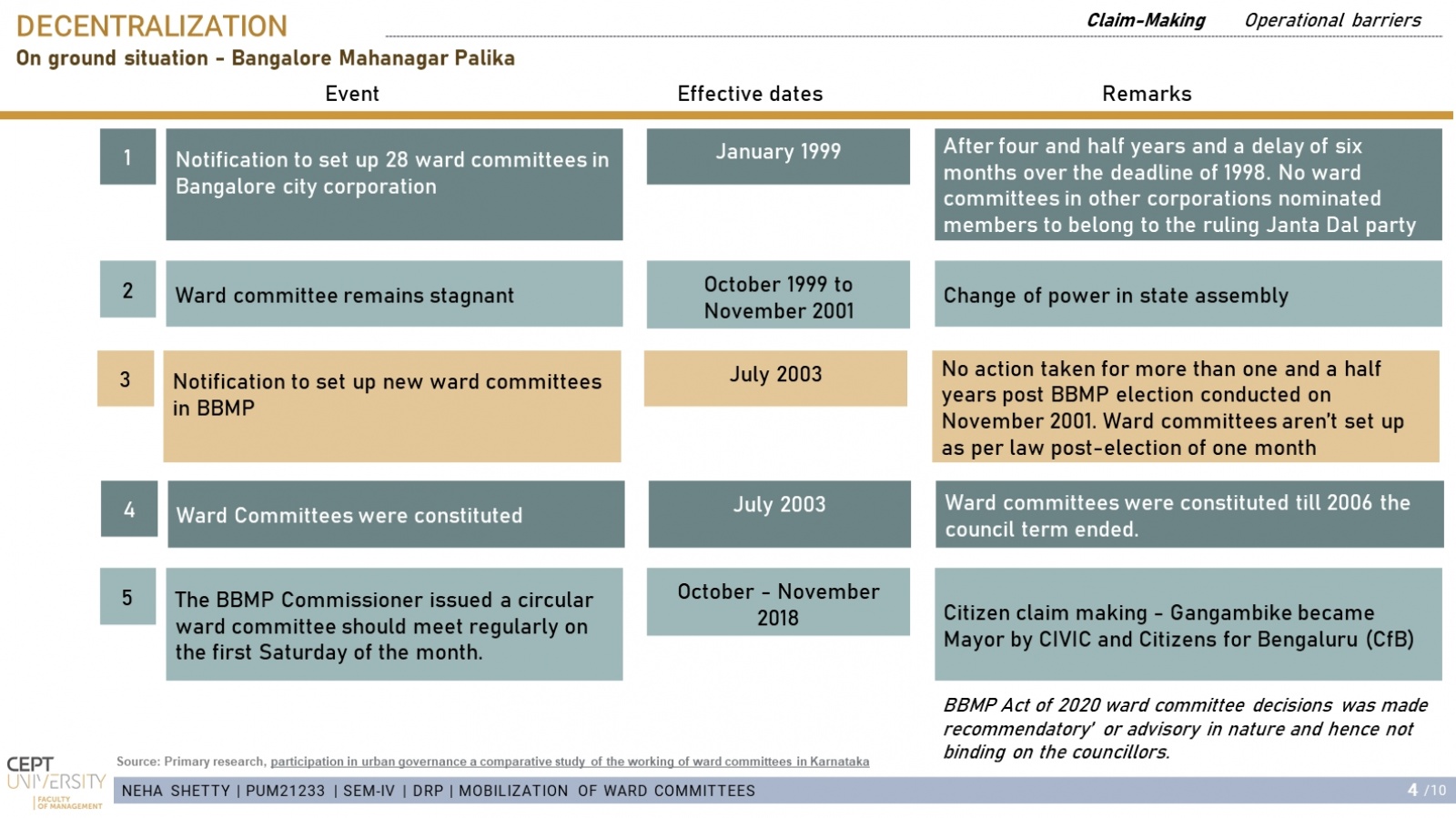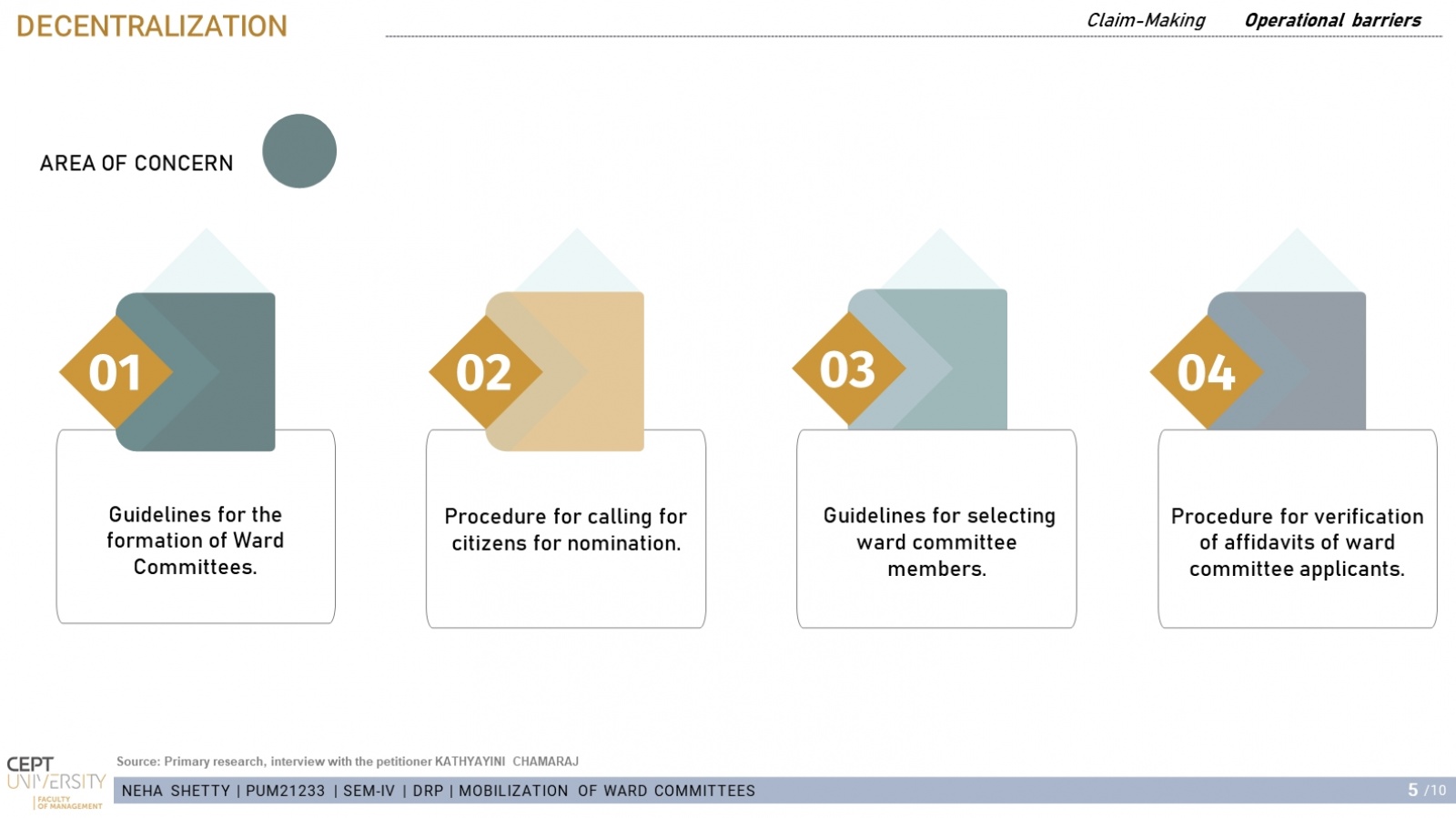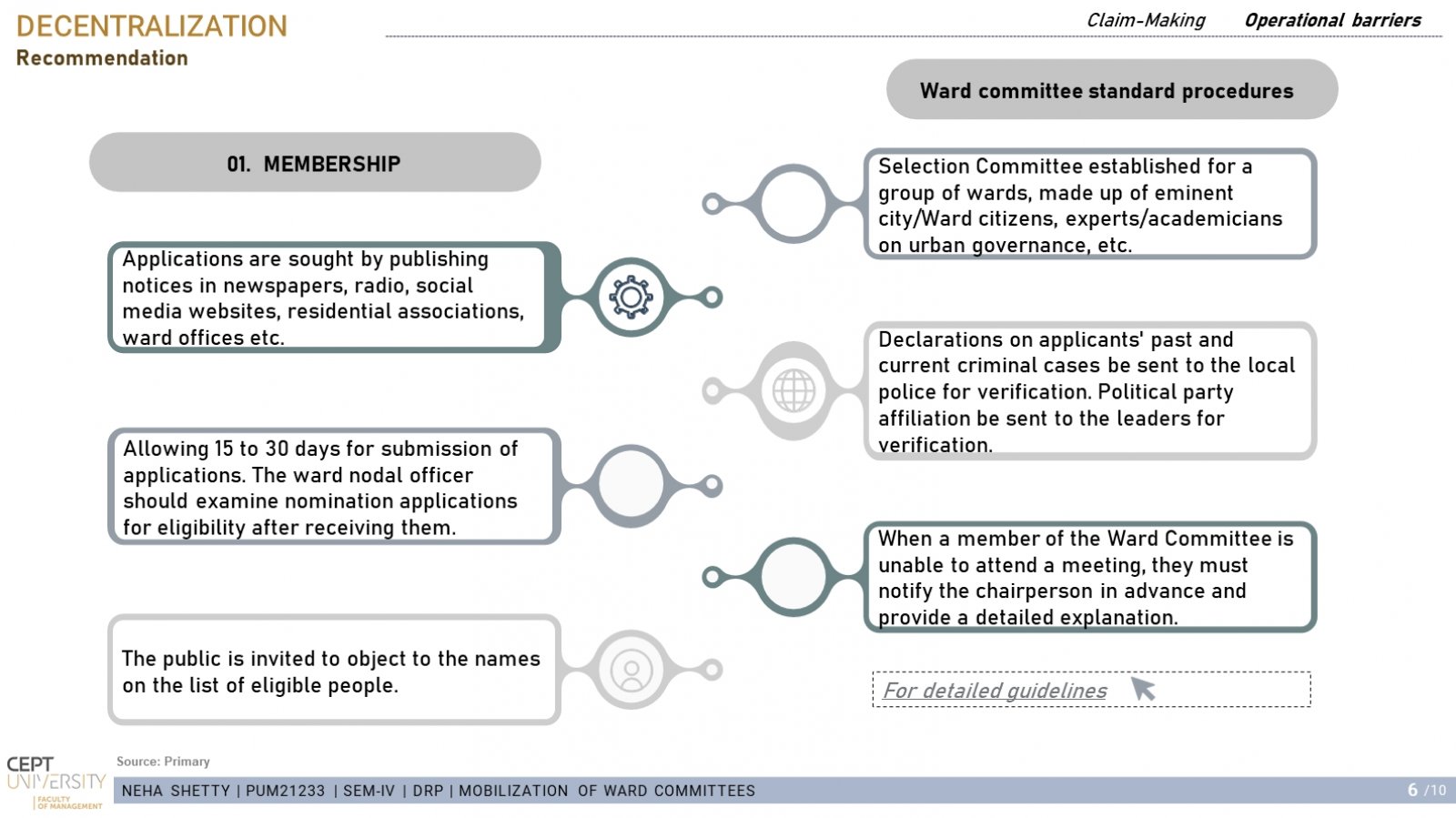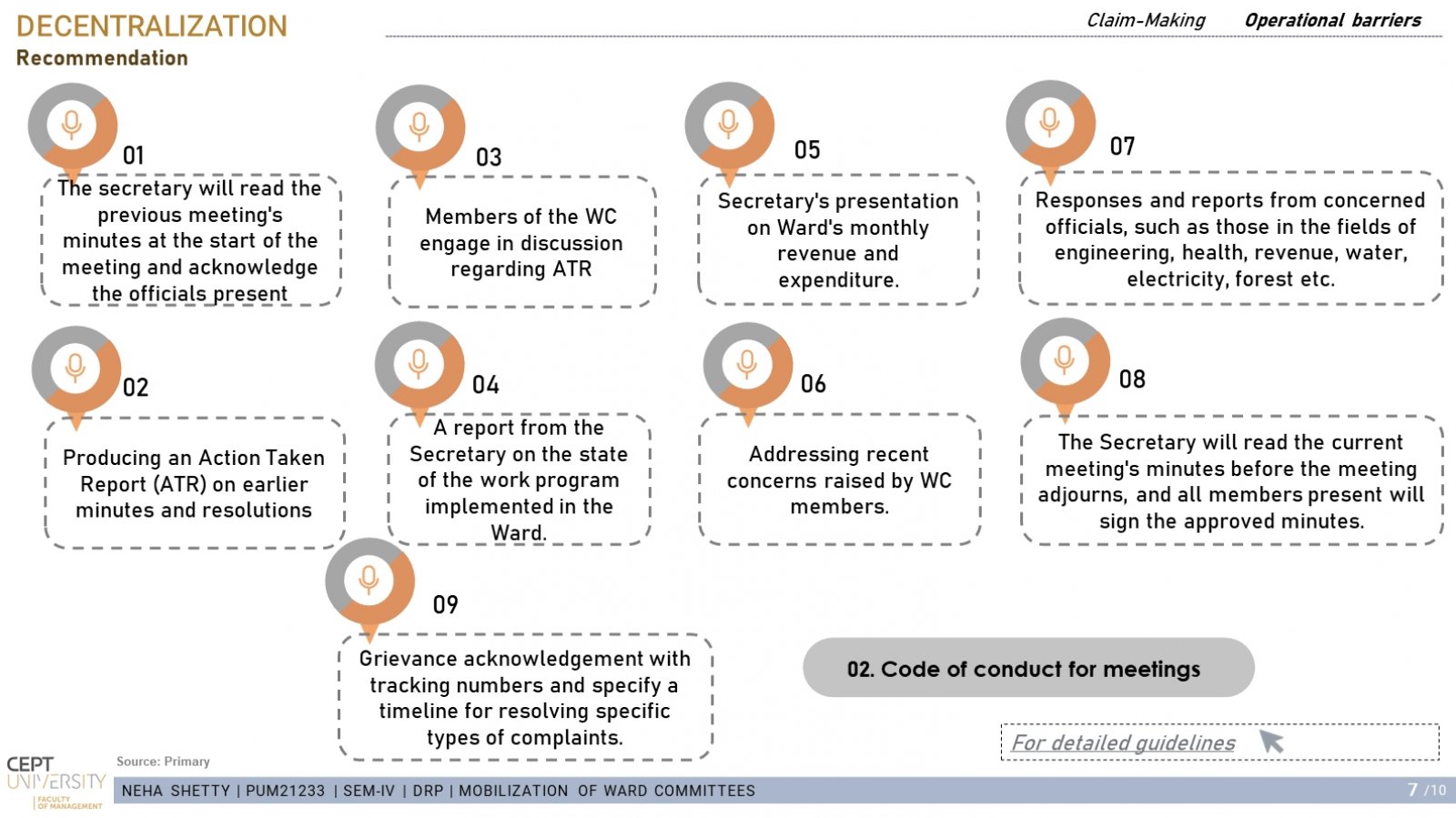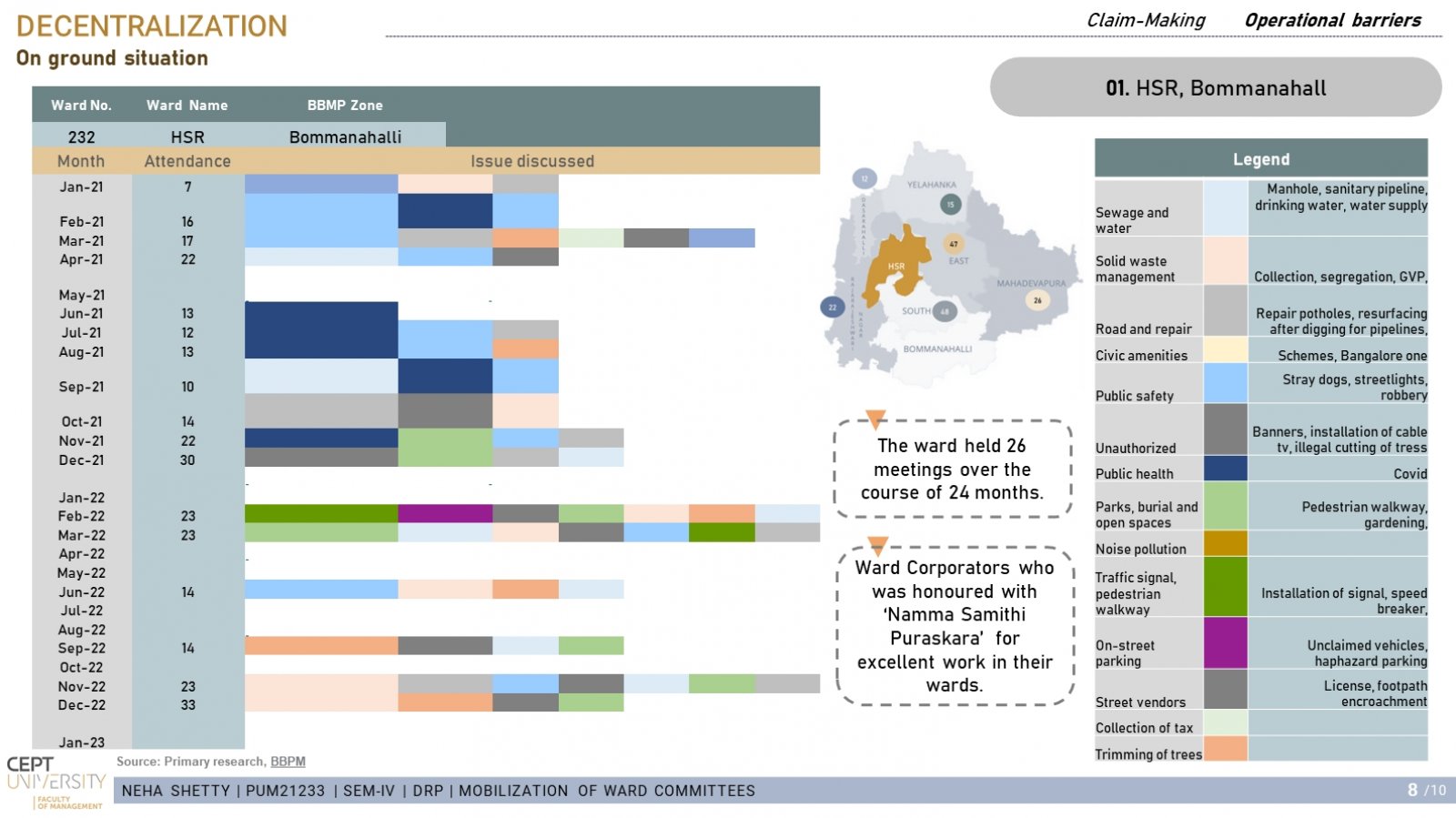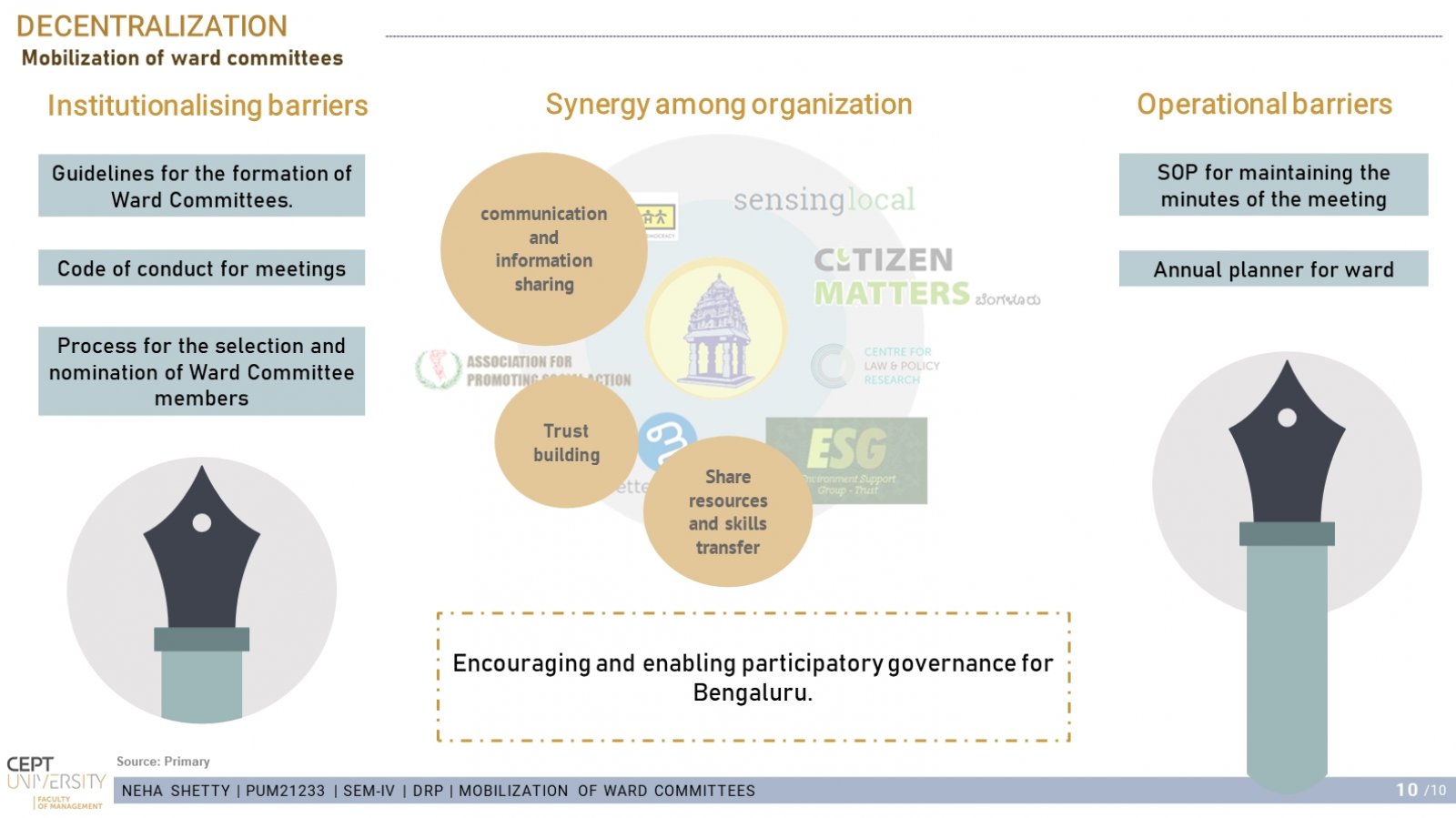Your browser is out-of-date!
For a richer surfing experience on our website, please update your browser. Update my browser now!
For a richer surfing experience on our website, please update your browser. Update my browser now!
The 74th Constitutional Amendment Act of 1993 intended to provide an institutional framework for the establishment of grassroots democracy. Ward committees were seen as a key component of the mandated participatory governance mechanism. The area of concern is that not all the states have the enabling legislation for the constitution of the ward committees. Not all the cities having the legislature have ward committees. Wherever the ward committees are functional they have not been delegated defined functions and finances. The study evaluates the existing operational procedures of ward committees and intervening in strengthening the institutionalizing and operational barriers.
